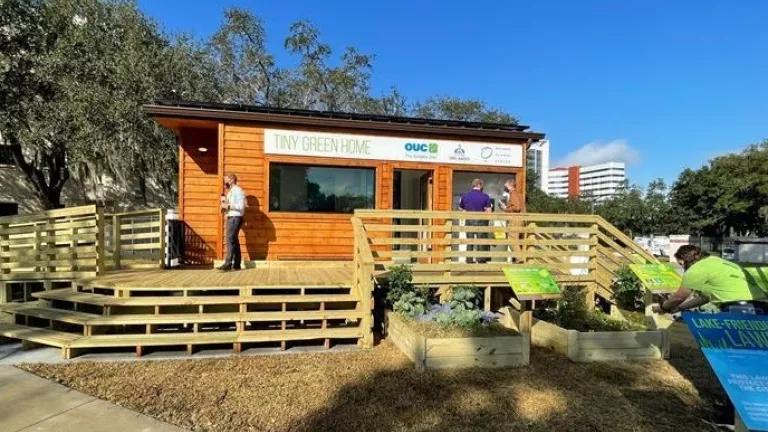Orlando's Tiny Green Home Reimagines Climate Change Outreach
An innovative exhibit engages residents to fight climate change, alleviate stress on their aquifers, and divert waste streams from the landfill.

Getting ready for the public ribbon cutting ceremony at the Orlando Science Center
This blog was co-authored with Ben Stacey, Orlando Climate Advisor.
What's small in size but big in impact and green all over? The City of Orlando's "Tiny Green Home," a new mobile education center inspired by mobile education centers like LiveSmart and BuildSmart, and took the concept to the next level. The Tiny Green Home is an innovative exhibit that engages residents to fight climate change, alleviate stress on their aquifers, and divert waste streams from the landfill while saving money in doing so. Located at the Orlando Science Center, which sees over 620,000 annual visitors (pre-COVID), have the opportunity to see the exhibit, and for residents not able to make it over to the Science Center, the Tiny Green Home was built to travel. The City's Office of Sustainability and Resilience plans to deploy the Tiny Green Home to reach low-income communities and leverage the mobile exhibit as a flagship at community events throughout the year. The call for residents to take action will be critical in achieving Orlando's Community Sustainability Action Plan goals, including an ambitious 90% reduction of greenhouse gas emissions by 2040.
With the support of the Bloomberg Philanthropies American Cities Climate Challenge, and in partnership with the Orlando Science Center and the Orlando Utilities Commission (OUC), the Tiny Green Home features cutting edge tech, like electronic controlled View Glass windows, solar panel micro-inverters, and an electric vehicle charging station. It's not all bells and whistles—the Tiny Green Home was also strategically designed to promote no-cost and low-cost programs accessible to all, no matter their income levels. The Tiny Green Home will also feature community-based resources and program information such as how to sign up for a solar co-op with Solar United Neighbors and how to access affordable financing for home improvements for underserved communities through the Solar and Energy Loan Fund.

Office of Sustainability & Resilience Director, Chris Castro, highlights smartphone supported features of the Tiny Green Home.
In addition to being an impressive tiny home and sustainability educational tool, the Tiny Green Home was developed through a model partnership and community effort. Local businesses lined up supporting the effort - pitching in lumber, solar panels, an EV charger, a NEST thermostat, and more. Little Diversified Architectural Consulting, a local firm that built Florida's first net-zero school, helped reimagine a design that integrated building features with visitors' experience. As cities continue to push for more ambitious climate action, innovative partnerships and creative educational tools like the Tiny Green Home are exciting ways to engage residents and ensure they have the resources to fight climate change at home.




